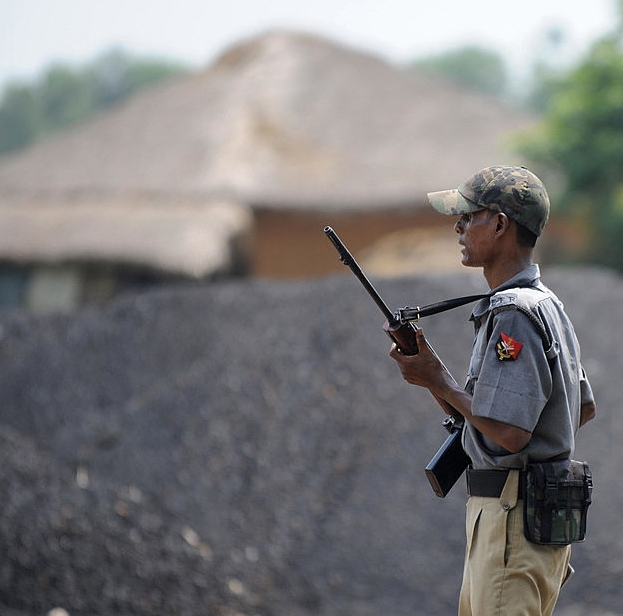
When the news broke out about the BJP securing a clear cut majority in the Lok Sabha, an array of narratives floated in Pakistan over what Modi’s government could mean for regional stability in light of India’s fragile relationship with Pakistan (for example, here and here). Speculation aside, the margin of defeat for the INC, which has dominated India’s political landscape, came as a shocking development. The results however, hint at quite a few factors which have had a bearing on the average Indian voter, which goes beyond BJP rhetoric in the lead up to the ballot.
What was noticed in Pakistan was that there was a clear cut rejection of dynastic politics in favor of the empowerment of the common man in India; which was a departure or a stark contrast to voter preferences here during the 2013 elections. The inability of the Zardari led PPP to address the economic woes of the average Pakistani and the visible clout of the Sharif dynasty’s economic footprint in Punjab, was to prove the pivotal factor in ensuring that the latter came to the Abode of Peace with a comprehensive victory behind it. In India, the margin of victory for the BJP however, indicated the success of the world’s most populous democracy to topple dynastic rule in favor of a candidate which aspires to represent the common man through thick and thin. His humble beginnings and the BJP’s adamancy in terms of eradicating corruption and what many Indian’s had viewed as a ‘cosmetic’ success (as far as India’s profile of boasting about being an economic power under the INC is concerned) was pivotal in Modi’s rise to becoming Prime Minister at the center. In addition, the BJP’s successfully castigating the INC for not adopting a hard line approach on the other side of the border, which hints at a stronger foreign policy, proved to be equally crucial in ensuring that Congress’s popularity withers under pressure.
In a nutshell, the BJP’s sweeping run to the finish line, according to me, represents the revolt of the ‘Periphery’ against the ‘Center.’ Some analysts have been bold enough to consider the outcome of the elections to represent how the issue of the Gujarat pogrom had been clouded by the economic growth which Modi has boasted about (despite it not having a genuine impact on the HDI on the state according to Amartya Sen and if one considers the overall assessment of Gujarat’s statistics in terms of economic growth). However, key considerations of a stronger foreign policy, pragmatism with dealing with internal challenges, such as terrorism, economic growth and alleviation of poverty, coupled with a desire to eradicate corruption as an impediment for achieving the goals of shared prosperity, ensured that Modi rose to the top with the BJP cashing in on the loopholes which came to the fore during Congress rule.
Hence, it can be safely said that barring the contentious affair of the Gujarat Riots, Indian voters demonstrated incredible maturity as far as voting preferences are concerned. Modi’s economic record in Gujarat, his astute leadership and his ability to garner popular support as a champion of economic development and eradicating corruption, has been met with considerable approbation. However, given that his party has historically adhered to the concept of ‘Swadeshi’ or promotion of indigenous industries for economic empowerment, and his pro-capitalism ideology which encourages foreign investment, the internal discord emanating from the North East of India, should be a subject of concern and contemplation from the scholarly community.
The quagmire in question is the Maoist- Naxalite insurgency in the North East and the areas which constitute the ‘Red Corridor’, which has been defined as ‘the biggest threat to national security’, by outgoing Prime Minister Manmohan Singh . The contours of the insurgency range from economic discontent with corporate juggernauts in India to the failure of the government to address gross exploitation, which has prompted them to pursue a ‘ rural’ rebellion’ since the formation of the CPI- Maoists in 2004.
Where recent discussion on this blog has focused heavily on what this Modi-led government entails for regional stability, internal stability in tackling a relentless insurgency in India should also be contemplated over. The queries below are open for inputs, particularly from the Indian scholars in this ‘South Asian Voices’ project, as to what the Modi strategy could or should be to tackle the Naxalite Insurgency. The questions are:
- Would the Modi led NDA consider a policy of rapprochement and engagement with the Maoists, given that previous military strategies pursued by the INC have been counter- productive?
- If yes, what could be the contours of the negotiation process? Would it follow the PPP decision to reach out to the BLA with incentives such as the Balochistan package here in Pakistan, or will it constitute more political accommodation for the Maoists?
As much as indigenous growth and foreign investment is crucial for India’s rise in the economic arena, the challenge that the Naxalite insurgency poses for Modi is considerable and mandates a comprehensive and holistic strategy. I believe one needs to be cognizant of how this government will tackle an insurgency which continues to be ruthless and empowered as we continue to debate over how this government would have an impact on regional stability. These queries are open for inputs from anyone, but I would like to gain an Indian perspective on what strategies should the new government adopt in dealing with an insurgency which on an ideology of overthrowing the Indian state and creating a communist government?
***